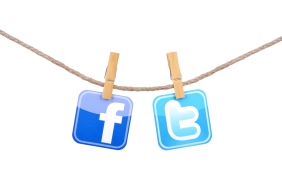 There are many steps of publishing a book, but finishing step one can feel like the most rewarding. A big thing happened for me a couple weeks ago. I finally completed my first digital version of my book’s manuscript! (Yes, I actually wrote my first several drafts on notebook paper). Now it’s finally in the computer! A lot more editing is still in my book’s future, as it undergoes reader criticism; but in the meantime, there is one other step I have begun in order to increase my chances of getting published: building an online presence.
There are many steps of publishing a book, but finishing step one can feel like the most rewarding. A big thing happened for me a couple weeks ago. I finally completed my first digital version of my book’s manuscript! (Yes, I actually wrote my first several drafts on notebook paper). Now it’s finally in the computer! A lot more editing is still in my book’s future, as it undergoes reader criticism; but in the meantime, there is one other step I have begun in order to increase my chances of getting published: building an online presence.
As I mentioned a couple weeks ago in Struggles of Getting Published in Today’s World, publishers really want to see that a writer has an online following, before they’ll take a chance on signing a debut author. Since I’m getting to that point of starting to look for an agency to pick me up, this week I started my official Facebook author page and Twitter account. If you’re an anti-social media individual like myself, you’ll hate downloading the apps to your phone but know it’s for the best. Social media is the best tool to gain an audience. Reality is, a writer can’t get into the publishing world as a nobody. And so, as you should as well, I conformed to society’s rules and jumped into the “rabbit hole” of Social-Land.
Set up Platforms
There are lots of platforms to get involved in to get your name out into the world. Most common are Facebook, Twitter, Instagram, Pinterest, YouTube, and Google+. To begin, my focuses have been Facebook and Twitter. Facebook is a good platform to establish a constant location for updates concerning you and your upcoming book, while Twitter is a good platform for connecting with new people.
Creating a Facebook author page is super easy. Click on “Create a page” on the left side of your personal profile, and Facebook guides you step by step through the rest on how to setup. When setting up your platforms, find a photo of yourself that you like and want people to know you as. It’s best to keep your profile picture consistent across your platforms to help create a brand image. If someone discovers you on Twitter and decides to look you up on Facebook to like your page, it will be easier for them to find you if they see a profile picture they recognize. I’ve tried to find someone’s page before, but their profile pic was so unrecognizable, I wasn’t sure if it was even the same person. So I didn’t follow their page.
Your author bio will also help followers connect with you. Just because you don’t have any writing awards or published books doesn’t mean you have nothing to say about yourself. Who are you? What do you enjoy doing? Keep your bio short and informative for your social media, but also be working on a longer, couple paragraph-long bio for future use to include in book proposals.
Create your personal brand with a consistent profile picture and descriptive bio.
To set up Twitter, you’ll need to think of a list of words that describes you for your profile. This will be similar to your profile bios for other platforms, except Twitter tends to be more one word descriptions. Top of the list should include something like “writer” or “aspiring author” to let other writers know to follow you. The others can be traits about you such as “coffee drinker” or “animal lover” or “human,” etc.–basically anything you want others to know about you that will entice them to follow. Over the last week, Twitter has proven to be a more useful tool than I would have imagined. I started using it, mainly because I know publishers will look to see if I have a following on there or not. Within the first day, I had connected with about 40 other writers/authors who were willing to help boost my name. In a week, I had 130 followers. Many have offered to check out my Facebook page, follow my blog, give tips on their writing journey, along with overall support. I even had a few suggest me to their followers on #FridayFollow.
Aside from Facebook and Twitter, either a website or a blog is the other main thing a publisher will look for. Google+ isn’t a popular place for people to visit; YouTube can be a good thing only if you can make it with quality; and Pinterest doesn’t provide a good sense of personal following (most people can easily get thousands of followers without being known by name). Just because lots of people follow someone on Pinterest doesn’t mean they’ll know that person’s name if they ever publish a book, which is the publishers’ reasoning behind looking at a debut’s social following. Those will be the most likely to buy the book.
Create only as many profiles as you can effectively upkeep.
Pinterest, for me, has been more a personal tool for writing ideas, motivation, and story organization than consciously trying to gain a following. Regardless of which platforms you choose to utilize, have only as many social media platforms as you can upkeep successfully with content and appearance. Keep in mind that it’s better to have a couple profiles that look really good than to have a dozen profiles that look awful. Maintaining these platforms takes a lot of time every day, so make sure you dedicate your time evenly among them.
Post Content
Don’t post the same stuff across all your platforms.
Since I had used Facebook before, it was easy to figure out how to make posts and respond to page activity. Twitter, on the other hand, has been new territory for me. I had never tweeted anything before in my life, other than to share my blog posts to my zero followers. So I started googling things like “how to tweet?” and “hashtags for writers.”  To start out, I’ve been looking at others who are in my same position–writers looking for followers and an agent–but have been working at their social platforms for several months to several years. Look at their first posts and pick out the content you connect with and like, then use those ideas as a base to create your own content. NOTE: I’ve been told by marketers as well as a social media guru that your content should vary across your platforms–meaning don’t post the same thing to your Twitter, Facebook, and Instagram. So make each post unique to every platform. Also remember to keep your content fun, interesting, and helpful. If you wouldn’t like what you post, probably no one else will either.
To start out, I’ve been looking at others who are in my same position–writers looking for followers and an agent–but have been working at their social platforms for several months to several years. Look at their first posts and pick out the content you connect with and like, then use those ideas as a base to create your own content. NOTE: I’ve been told by marketers as well as a social media guru that your content should vary across your platforms–meaning don’t post the same thing to your Twitter, Facebook, and Instagram. So make each post unique to every platform. Also remember to keep your content fun, interesting, and helpful. If you wouldn’t like what you post, probably no one else will either.
Build Your Followers
Use the follow/unfollow technique to gain followers.
Since gaining followers is the whole point of creating all these platforms, it’s important to aggressively pursue connections. I have been following Patricia Beal’s advice she gave us in her interview Debut Author Patricia Beal Talks about Her Journey as a Writer a couple weeks ago. She suggested, based on her own process, to start out by following a couple hundred people at a time. On Twitter, I searched for other readers and writers/authors and started clicking the “Follow” button. Every few days, I go through those I follow and unfollow those who haven’t followed back to keep my numbers of Following and Followers close to even. Those close numbers will give the signal to anyone who sees your profile that you will likely unfollow someone if they don’t follow back, encouraging more follows in return to keep their own numbers up. When you start to unfollow people, make sure you’ve allowed for enough time for them to have seen your follow. Also, check for the last time they tweeted. If their last tweet was before you followed them, chances are they aren’t ignoring you but rather just haven’t seen you yet.
To keep your followers, make them feel appreciated. If they like something of yours or mention you, make a point to publicly thank them. Also, interact with your followers by either responding to comments or commenting on their tweets. Your success depends on how well you can connect with your followers. Be grateful to them.
Now that they are out there, please check out my social media platforms. They are still in the early stages of being developed, but the important part is that I’ve started. You can click on either the icons at the top of this page or on the links below:
- My Facebook author page
- Author Twitter account
- Inspiration writing Pinterest boards
- (Still being developed) writing prompts Instagram
If you have any questions or suggestions on how to gain more followers or improve social media content, please comment below, and I’ll get back to you as soon as I can. And if you haven’t already and are hoping to get published, start building your own social platforms and let me know how it goes. Comment a link to your profile, and I’ll check it out!
To read more about writing, come back next Tuesday morning for my article on the next step after writing your book.

Valuable tips!
LikeLike
Hi! I followed you here after reading your post on ICFW. You bring out some interesting points. I’ll be back! All the best with your book. http://www.writetoinspire.us
LikeLike
Thank you so much for the follow 🙂
LikeLiked by 1 person